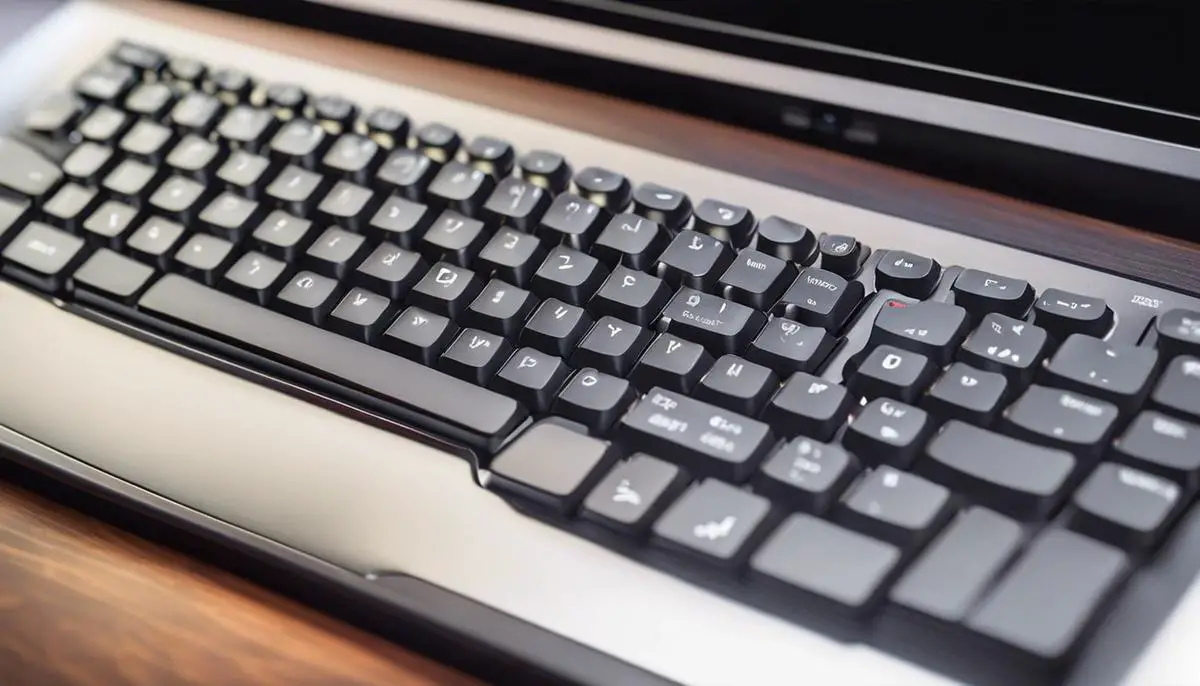Understanding and utilizing shortcut keys effectively is a fundamental skill set in the realm of digital literacy. These keystrokes, which are often overlooked by the general public, offer a swift and effective way to navigate and manipulate software programs. Specifically, this discussion focuses on the crucial functionality of the ‘redo’ shortcut key. By comprehending the importance of this particular keystroke, users can greatly enhance their proficiency in document editing tasks and boost their workflow productivity. We delve into the benefits of shortcut keys, demystify the role of the ‘redo’ command, and provide a practical guide on its application across various operating systems and software programs.
Understanding Shortcut Keys
Unleashing the Power of Shortcut Keys: The Ultimate Time-Saver in the Tech World
If you’re aspiring to enhance productivity levels, as a tech enthusiast, you must learn about powerful tools in computing known as shortcut keys. There’s no denying the incredible value they bring to your personal and professional tech experience.
Shortcut keys, as the name suggests, are combinations of keys that trigger certain commands in a software or operating system, bypassing the traditional mouse interface. Although they might seem daunting to beginners, once mastered, they are game-changers.
Why are shortcut keys so compelling? First and foremost, speed. Instead of manoeuvring a mouse through drop-down menus to locate a command or toggling back and forth between screens, a simple key combination can do the trick in the blink of an eye. It’s a tool for the impatient – those who crave efficiency right at their fingertips.
Beneath the pursuit of speed, lies the allure of multi-tasking. Executed within an underlying application, shortcut keys facilitate smooth transitioning between tasks. For instance, you can swiftly copy from one window and paste into another without ever ditching the keyboard – an ultimate time-saver.
Moreover, shortcut keys enhance ergonomics. Relying heavily on the mouse may contribute to repetitive stress injuries. Your wrist stays in the same spot while all the work gets done by your fingers. With shortcut keys, however, your hands share the load of commands, reducing the risk of strain.
Still, in the age of touchscreen devices, some may question the relevance of keyboard shortcuts. Yet, for power users multitasking on a desktop, or for any job that demands speed and precision (think data entry, coding, digital design), shortcut keys remain undefeated champions.
Shortcut keys are more than keystrokes. They serve as important crossroads where technology meets practicality, marrying speed with efficiency. Any tech enthusiast would be amiss not to unlock this potential.
Remember, shortcut keys are software-specific; a shortcut in one program might not work in another. So, learning and implementing them is definitely a process, but it pays off in huge gains of productivity and comfort.
In an ever-evolving technological landscape, fast and efficient navigation is vital. Embracing the power of shortcut keys supports this ideal, making them a cornerstone of any effective technology use. So, take the time to discover and master these indomitable time-savers – it’s never too late to boost your tech game.

Function of Redo Shortcut
Exceptionally Agile with the Redo Shortcut Key
Imagine this: you’re in the zone, flooding the digital canvas with words for the next big report. The sentences are flowing smoothly, the paragraphs astoundingly coherent, and you’re typing lightning-fast. Suddenly, in your enthusiasm or haste, you accidentally delete a beautifully crafted sentence. Or perhaps, after tweaking a complex spreadsheet formula, you unintentionally input some erroneous value, disrupting the formula’s functionality. In these instances and a myriad more, the redo shortcut key becomes your knight in shining armor.
Simply defined, the redo shortcut key is a command in computer software programs that allows you to quickly restore the last action you’ve undone or made a change to. Suppose that you’ve erased your last few typed words or, better yet, an entire paragraph, the redo shortcut key serves to bring it back almost instantly, acting as a kind of boomerang for your misplaced actions. It’s like pressing the rewind button but for your computer tasks.
If we look at its function across diverse platforms, we can see slight variations. In Microsoft Windows applications, the key combination for redo is typically Ctrl+Y, however, applications like Adobe Photoshop opt for the Shift+Ctrl+Z tandem. In Apple’s macOS applications, the redo shortcut key is Cmd+Shift+Z. These commands embrace users’ need for flexibility and adaptability, meeting them at the crossroads of speed and accuracy.
It’s vital to note that the redo shortcut key’s functionality goes beyond mere text recovery; it is invaluable in flawlessly navigating software programs, from Adobe Illustrator to Excel. This key swiftly brings you back in time if you’ve underestimated an action’s impact or, in an impulsive moment, cleared a task. It simplifies data recovery, configures previous layouts, or restores your last brush stroke on animation software, music production tools, video editing software, and much more.
While mastery of shortcut keys becomes a powerful tool in any tech enthusiast’s arsenal, it remains important to understand the context of various applications. For instance, in text editors, the redo command restores recently deleted data, but in graphic designing tools, it might revert to a previous version of the artwork. Similarly, in programs like Microsoft Excel, redo can bring back a recently altered formula or deleted cell.
To sum it up, in the age of endless digital possibilities, the redo shortcut key is not just a feature but a priceless time-saver, pushing productivity and efficiency to new heights. Remember, a tech maven isn’t just about knowing the latest trends or using the latest devices. It’s about maximizing the full potential of every tool at your disposal, including the humble but phenomenally potent redo shortcut key. Time to press Ctrl+Y and rewrite your tech journey!

Implementing Redo Shortcut Key
Efficient Implementation of the Redo Shortcut Key
As we delve deeper into the nuts and bolts of keyboard shortcuts, a special mention goes to one of the lifelines for anyone working on a computer – the redo shortcut key. How does one implement this function effectively to enhance execution speed and improve overall efficiency? This piece aims to offer practical answers to that question.
Knowing the Basics
Often confused with the ‘undo’ command, the ‘redo’ function enables the user to reverse an ‘undo’ action. A common scenario involves a user mistakenly deleting an entry and utilizing the ‘undo’ function to retrieve it, only to discover they need to reverse it once again. Here, the redo shortcut key is your saving grace.
Actionable Steps for Implementing the Redo Shortcut Key
Your tech savviness is about to take a leap. Here are some steps:
- Familiarize with the Command: To begin, it’s important to remember that key commands can vary depending on your operating system. In most Windows applications, the redo shortcut key is a combination of ‘Ctrl’ + ‘Y.’ On a Mac, ‘Command’ + ‘Shift’ + ‘Z’ will execute the same function.
- Implement Consistently: The more consistently you use the redo shortcut key, the more instinctive its usage will become. It’s all about muscle memory.
- Comprehend the Application: Not all redo commands are created equal. Some applications reverse the most recent action, while others have multiple levels of ‘undo’ and ‘redo.’ The latter is much more useful in software like Photoshop or coding text editors, where multiple actions might need to be reversed or reinstated.
- Test it Out: Keep an open document on your desktop to practice whenever you have some free time. Trying out this shortcut in different operating systems and applications will expedite learning.
- Use Sequential Key Combinations: Sequential key shortcuts, where you press one key after the other rather than at the same time, can make the rediscovery of your last action easier and are worth exploring.
So, whether you are polishing a business presentation, refining a digital design, or coding a new software feature, the redo shortcut key is a time-saving prodigy that will elevate your productivity. So gear up, hit those keys, and witness the magic of tech optimization unfold. The ultimate tech proficiency lies in the subtle art of mastering keyboard shortcuts – and the smart implementation of the redo function is a step in the right direction.

Having taken this journey to understand how to maximize efficiency with the ‘redo’ shortcut key, it’s clear that grasping these seemingly minor aspects of digital literacy can have significant impacts on productivity levels. Everyone from novices just getting comfortable with using a computer to seasoned tech-savvy users can benefit from the time saved and the ease of use offered by these shortcuts. Let’s continue to hone our computer skills by utilizing the ‘redo’ shortcut key, optimizing our workflows and efficiently reverting actions as needed. Mastering these small details can facilitate a smoother, swifter, and more efficient interaction with our digital devices.
